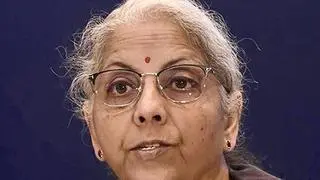With Bihar and Punjab finally biting the bullet and hiking power tariffs, there are clear indications that electricity utilities in other States would be forced to follow suit.
Delhi is likely to be the next, as increasing use of imported coal in generation stations across the country translates into greater financial stress on the already beleaguered distribution sector. This would mean that consumers across these States could find electricity prices shooting up across the country in the due course, which could lead to further hardening of the inflation trend.
NTPC Ltd's Farakka station, where the country's largest power generator is currently blending 20 per cent imported coal, the highest in all its stations, has already seen just variable component surge to Rs 2.79 per unit of electricity produced in 2010-11, pushing up tariffs to around Rs 3 per unit.
Farakka's variable cost is higher than the NTPC's average tariff of Rs 2.63 across all its 28 stations during the financial year. NTPC is currently blending imported coal between 7 and 20 per cent across its stations.
NTPC's average imported coal blending during 2010-11 was close to 8 per cent in comparison to about 6.5 per cent in the previous year. This could be much higher this year, as the domestic coal shortage is only getting worse.
Blending of 10 per cent imported coal would result in a 35 paisa per unit increase in costs. Considering NTPC's total generation of 220.536 billion units last fiscal, the additional outgo on account of a 10 per cent blending for State Electricity Boards (SEBs) could be around Rs 7,720 crore.
Since fuels costs are pass though, as blending increases, the financial hit on SEBs will be higher, unless they pass it on to the consumers.
Mega power projects
A slew of private power projects, including Ultra Mega Power Projects such as Tata Power's 4,000 MW Mundra project, are coming up entirely on imported coal. A number of IPP projects are also coming up with blending of 30 per cent or more.
Besides, with a continuing gas shortage, utilities using the fuel have been forced to make spot purchases and buy expensive R-LNG (regassified-liquefied natural gas) to keep utilities running. All of these have tariff implications on SEBs.
During the last couple of months, the tariff in Punjab has been raised by 9 per cent, in Bihar it has been raised by 19 per cent.
“There are such tariff increases in the offing in other States also because nobody can expect to get a commodity at a price which is not sustainable in the market. Else, bankruptcy is the only option,”
According to industry estimates, in about five years, India could be forced to import almost 30 per cent of the total coal required to meet its electricity needs, compounding the worries for distribution utilities at large.
The losses suffered by the country's distribution utilities are estimated in the region of around Rs 70,000 crore in 2010-11.
Most distribution utilities, being state-owned and under directions from the governments of the day, have so far avoided filing their tariff petitions in time, or in proper form, before the designated State power regulators.







Comments
Comments have to be in English, and in full sentences. They cannot be abusive or personal. Please abide by our community guidelines for posting your comments.
We have migrated to a new commenting platform. If you are already a registered user of TheHindu Businessline and logged in, you may continue to engage with our articles. If you do not have an account please register and login to post comments. Users can access their older comments by logging into their accounts on Vuukle.